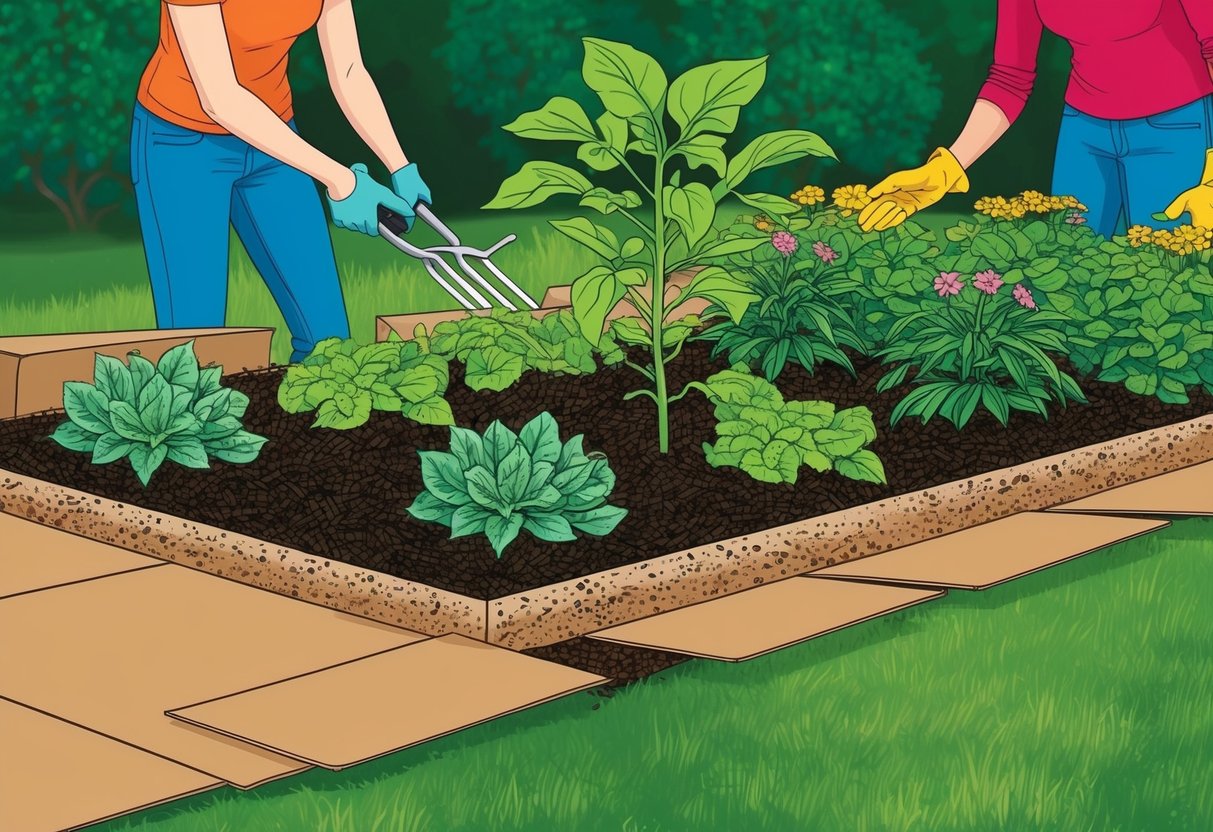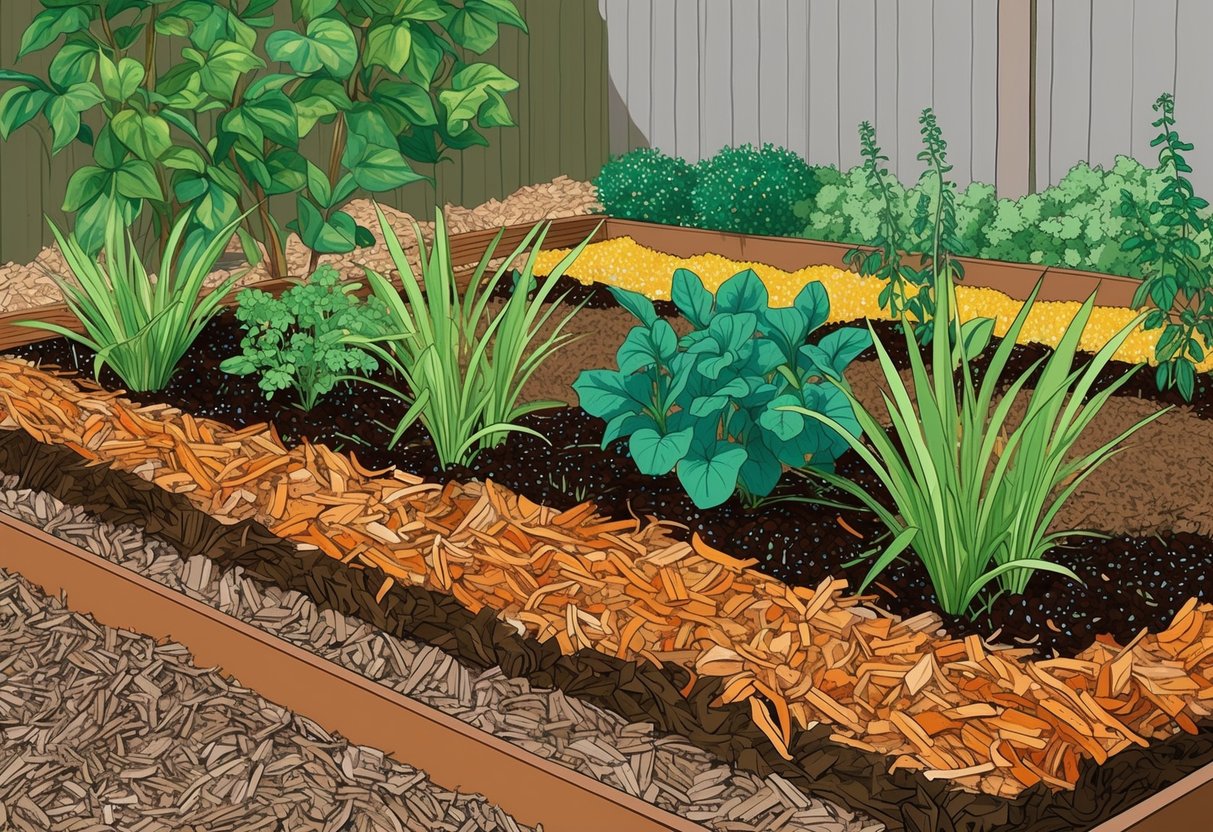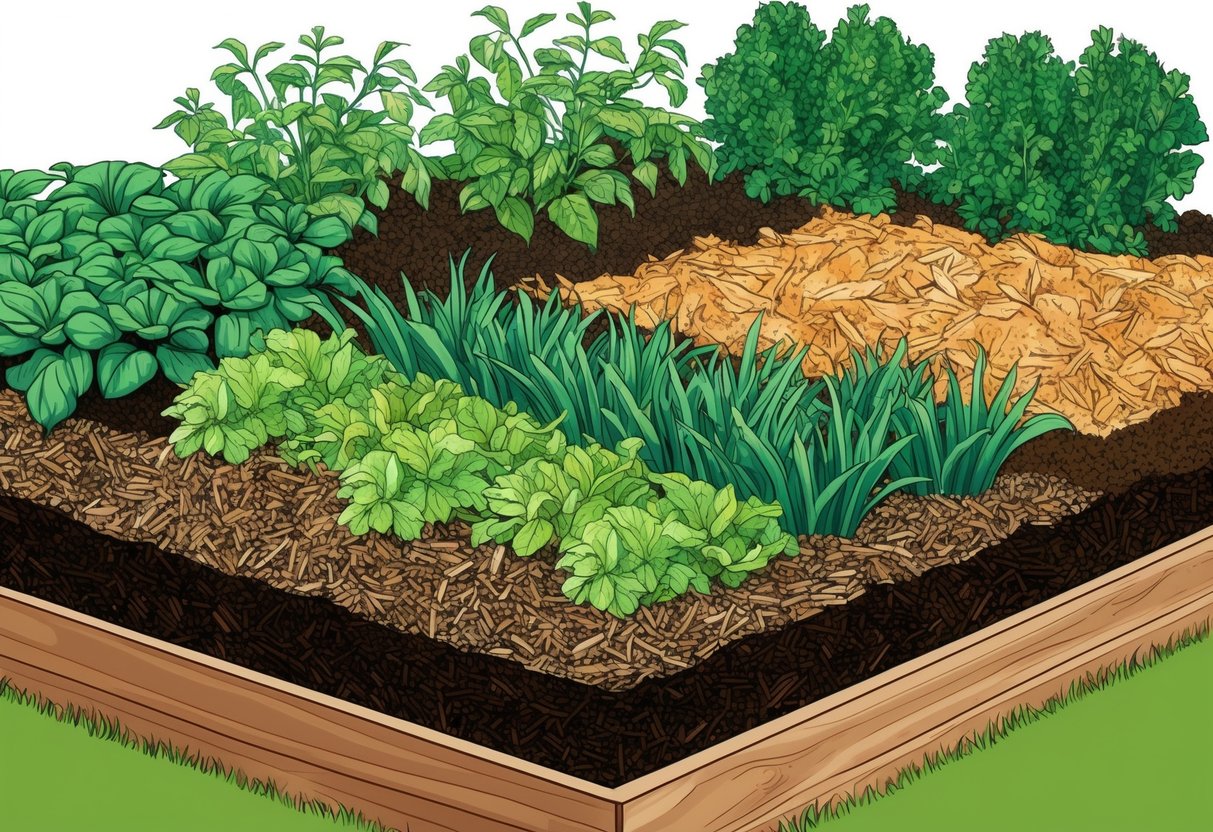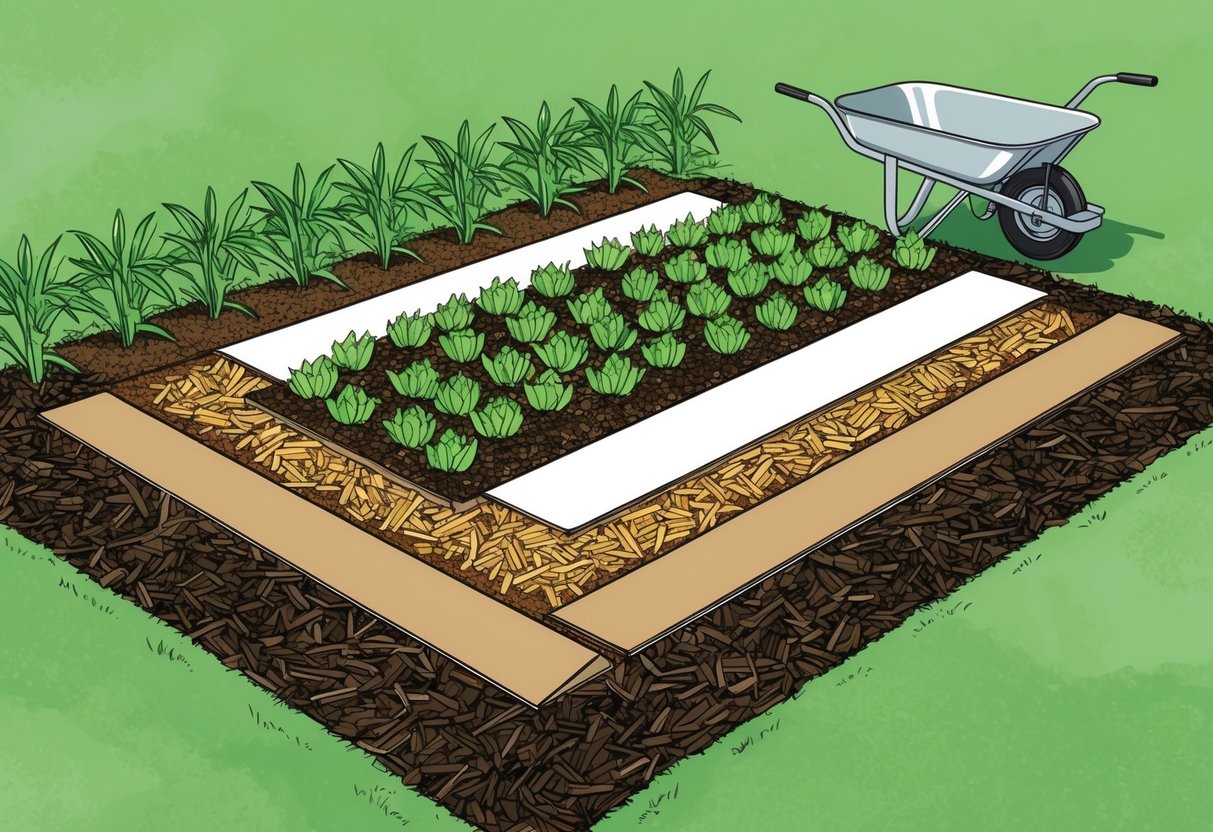
Managing Water and Moisture Retention

Maintaining proper water levels and keeping soil moist are crucial for successful no-dig gardening. Using smart watering strategies and applying the right organic mulch helps soil stay hydrated, supports healthy root systems, and improves crop growth during the entire growing season.
Watering Strategies
Effective watering practices focus on delivering moisture directly to plant roots while avoiding runoff and evaporation. No-dig beds naturally hold water longer due to undisturbed soil structure, but gardeners still need to monitor soil dampness, especially during dry spells.
Best practices include watering deeply but less often, encouraging roots to grow downward for stability and resilience. Water in the early morning or late afternoon to reduce water loss from heat and sun.
Using soaker hoses, drip irrigation, or watering cans with fine heads helps ensure water soaks into the compost layer without compacting the soil. Grouping plants with similar water requirements makes it easier to manage irrigation.
Consistently checking under mulch layers for moisture levels ensures roots have proper access to water. This helps avoid drought stress or overwatering.
Enhancing Moisture Retention with Mulch
Applying mulch is a core feature of the no-dig method and a key way to improve the soil’s moisture retention. Organic mulches—such as compost, leaf mold, straw, or grass clippings—are spread over the soil surface in a 2–4 inch layer, creating a barrier that slows evaporation and insulates against temperature fluctuations.
As mulch breaks down, it adds organic matter that helps soil store more water and fosters beneficial microbes. Mulch also reduces weed growth, which means less competition for moisture.
During the growing season, topping up the mulch keeps soil covered and maximizes moisture conservation. For successful results, avoid piling mulch directly against plant stems to prevent rot and pest issues.
To learn more about the practical use of mulch in no-dig systems, visit this detailed guide on no-dig gardening.
Nutrient Cycling and Amendments

No-dig gardening relies on recycling nutrients and regularly adding soil amendments to boost soil fertility. A strong focus on composting and careful use of organic additives help support healthy plant growth and resilient garden ecosystems.
Composting for Nutrient Supply
Composting is the backbone of nutrient cycling in no-dig gardens. Gardeners routinely layer finished compost, leaves, kitchen scraps, and grass clippings directly on the soil surface.
As these organic materials decompose, they release slow-release nutrients that feed both plants and beneficial soil life. Regular additions of nutrient-rich compost improve soil structure, increase water retention, and support the formation of stable aggregates.
A biodiverse blend of ingredients—such as garden waste, shredded newspaper, eggshells, and coffee grounds—adds a wider range of nutrients. Finished compost acts as both a fertilizer and a mulch, suppressing weeds and reducing moisture loss.
Tips for building effective compost piles:
- Alternate green and brown materials to balance nitrogen and carbon
- Keep the pile moist but not soggy for steady decomposition
- Turn or aerate periodically to promote oxygen flow
Using finished compost each season can keep the nutrient cycle active and minimize the need for synthetic fertilizers. No-dig methods emphasize continual surface feeding, which keeps soil disturbance to a minimum while encouraging natural fertility.
Using Soil Amendments
Soil amendments, like well-rotted manure, worm castings, and biochar, can be spread over no-dig beds to further boost soil nutrients. These amendments help replenish minerals, enhance cation exchange capacity, and provide extra support for microbial activity.
Adding biochar—pre-charged with compost or liquid nutrients—improves soil structure, aeration, and nutrient retention. Application should follow guidelines for moderation to avoid nutrient imbalances.
Well-aged manures supply a slow-release source of nitrogen, phosphorus, and potassium without burning plant roots. Other common amendments include:
- Rock dust to replace depleted trace minerals
- Crushed eggshells or oyster shell for calcium
- Leaf mold for humus and water retention
Each addition should be matched to the specific needs of existing soil. Regular testing can help determine which amendments are necessary to support optimal plant health and ongoing soil fertility.
For more guidance, explore detailed advice on nutrient cycling from experts on no dig garden methods.
Ongoing Maintenance and Weed Control

No-dig gardening requires consistent attention to soil health, mulch layers, and pest and weed management. Proactive care ensures robust plant growth, nutrient-rich soil, and a lower reliance on synthetic pesticides.
Regular Maintenance Practices
Routine garden checks help catch issues early. Gardeners should inspect beds weekly for signs of compaction, water pooling, or uneven mulch coverage.
Frequent observation can spot problems like emerging weeds or stressed plants before they escalate. Aerating the surface gently with a fork keeps the soil oxygenated without undoing no-dig benefits.
Adding a thin layer of compost every few months replenishes nutrients and supports beneficial microbes. Keeping pathways clear of debris aids circulation and reduces hiding places for pests.
Removing visible weeds by hand is effective in a no-dig system. Early action stops them from setting seed, minimizing competition for resources.
Monitoring soil moisture and adjusting irrigation as needed supports plant health and reduces stress that attracts pests.
Mulching for Weed Suppression
Applying organic mulch is essential in no-dig gardening for successful weed control. Mulch acts as a barrier, preventing light from reaching the soil surface and stopping weed seeds from germinating.
A 2-4 inch layer of well-rotted compost, straw, or leaf mold can choke out most annual weeds. Reapplying mulch each season keeps the weed barrier effective and maintains soil moisture.
Mulching also moderates soil temperature swings and reduces erosion. Clear any tall weeds first, and lay down the mulch directly on existing soil or organic waste.
Over time, as mulch breaks down, it feeds the soil and improves structure, supporting strong root systems and minimizing the need for chemical weed killers.